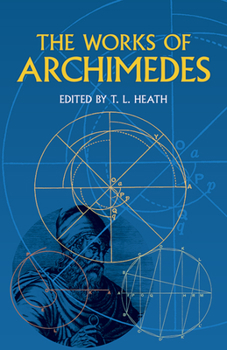The Works of Archimedes
Select Format
Select Condition 
Book Overview
The complete works of antiquity's great geometer appear here in a highly accessible English translation by a distinguished scholar. Remarkable for his range of thought and his mastery of treatment, Archimedes addressed such topics as the famous problems of the ratio of the areas of a cylinder and an inscribed sphere; the measurement of a circle; the properties of conoids, spheroids, and spirals; and the quadrature of the parabola. This edition offers...
Customer Reviews
A responese to the review by "Muhammad The Egyptian"
maybe more than one point of view is possible
Brilliant (but mostly not so _newly_ known)
The Works of Archimedes Mentions in Our Blog

Celebrate #NationalPiDay with 3.14 pieces of your favorite pie (à la mode, according to our recent poll), 3.14 slices of your favorite pizza (pie), 3.14 chapters of The Life of Pi, or by seeing how many decimal digits of Pi (π) you can memorize and say aloud. (FYI, there are over a trillion, so hydrate first.)





